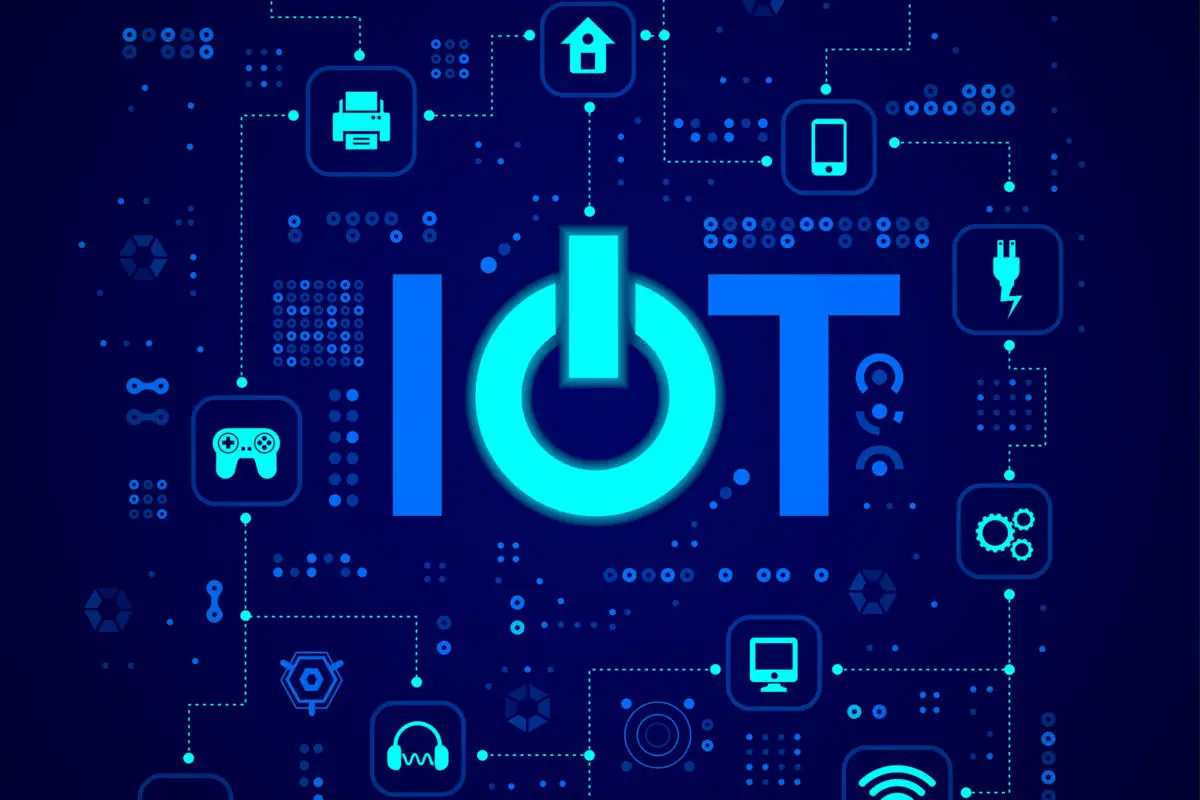What is IoT, and How Does it Work?
The Internet of Things (IoT) is a revolutionary concept that has transformed the way we interact with the world around us. It refers to the network of interconnected physical devices, vehicles, appliances, and other objects embedded with sensors, software, and connectivity that enable them to collect and exchange data over the internet. The IoT has the potential to impact nearly every aspect of our lives, from homes and cities to industries and healthcare.
The core idea behind the IoT is to create a seamless and intelligent ecosystem where devices can communicate, share information, and make autonomous decisions without human intervention. This network of connected devices opens up a wide range of possibilities and opportunities for innovation, efficiency, and convenience.
IoT devices are equipped with sensors that gather data from their surroundings. This data can include information about temperature, humidity, light, motion, location, and more. By collecting and analyzing this data, IoT devices can provide valuable insights and enable real-time monitoring, automation, and control of various processes.
The applications of IoT are diverse and span across multiple sectors. In smart homes, IoT devices can manage lighting, security systems, thermostats, and appliances, creating a more convenient and energy-efficient living environment. In industries, IoT solutions can optimize manufacturing processes, monitor equipment performance, and enable predictive maintenance. Smart cities leverage IoT to enhance urban services, such as intelligent transportation systems, waste management, and energy grids.
While the IoT offers immense potential, it also brings challenges and considerations. Security and privacy concerns arise due to the increased connectivity and data exchange. Safeguarding sensitive information and protecting against cyber threats becomes crucial. Additionally, the interoperability of different devices, standards, and protocols is vital for ensuring seamless connectivity and integration within the IoT ecosystem.
As the IoT continues to evolve and expand, it presents countless opportunities for businesses, entrepreneurs, and individuals to innovate and improve efficiency. By harnessing the power of connectivity, data analytics, and automation, the Internet of Things has the potential to reshape industries, enhance our daily lives, and create a more connected and intelligent world.

Some IoT Businesses …
- Smart Home Automation: Companies that provide IoT solutions for automating and controlling various aspects of a smart home, such as lighting, security systems, thermostats, and entertainment devices.
- Industrial IoT (IIoT): Businesses that focus on deploying IoT technologies in industrial settings to improve efficiency, monitor equipment performance, and optimize operations. This includes applications like predictive maintenance, asset tracking, and supply chain management.
- Wearable Technology: Companies that develop IoT-enabled wearable devices, such as smartwatches, fitness trackers, and health monitoring devices. These devices collect and analyze data to provide personalized insights and enhance the user’s daily life.
- Smart Cities: IoT businesses that aim to transform urban environments by integrating connected devices and sensors to optimize city operations, improve energy management, enhance transportation systems, and enable efficient infrastructure management.
- Agriculture Technology (AgTech): Companies that leverage IoT to provide solutions for precision agriculture, including soil monitoring, crop health management, irrigation control, and livestock tracking. These technologies help optimize farming processes, increase yield, and reduce resource waste.
- Connected Healthcare: Businesses that utilize IoT devices and systems to enable remote patient monitoring, telemedicine, medication management, and connected medical devices. These solutions enhance healthcare accessibility, improve patient outcomes, and reduce healthcare costs.
- Smart Retail: Companies that employ IoT technologies to enhance the retail experience, such as smart shelves, beacons, and customer tracking systems. These solutions provide personalized shopping experiences, optimize inventory management, and enable targeted marketing strategies.
- Energy Management: IoT businesses that focus on energy efficiency and management, including smart meters, home energy monitoring systems, and grid optimization solutions. These technologies help consumers and businesses track and reduce energy consumption, leading to cost savings and environmental benefits.
- Transportation and Logistics: Companies leveraging IoT for fleet management, asset tracking, route optimization, and real-time logistics monitoring. These solutions improve supply chain efficiency, reduce transportation costs, and enhance overall operational performance.
- Smart Buildings: Businesses that provide IoT solutions for building automation, energy management, and occupant comfort. These technologies integrate various systems, such as HVAC, lighting, security, and occupancy sensors, to create energy-efficient and intelligent building environments.

Overcoming Challenges for IoT Business Success.
The Internet of Things (IoT) has transformed industries by connecting devices and enabling seamless data exchange. While many businesses have thrived in this space, understanding the potential pitfalls is crucial. In this article, we explore key factors that can impede IoT business success and provide insights on how to navigate them effectively.
- Lack of Market Research: Avoiding market research can hinder an IoT business. Without understanding the target audience, competition, and industry trends, it’s challenging to develop a product that meets customer needs. Neglecting market research risks investing in a solution without a viable market or significant value proposition.
Solution: Conduct comprehensive market research to identify customer pain points, assess demand, and understand the competitive landscape. This research enables you to develop a compelling IoT solution that addresses specific market needs.
- Poor Planning and Strategy: Embarking on an IoT venture without a clear plan or strategy is a recipe for failure. Lack of a well-defined roadmap, achievable goals, and a coherent business model leads to mismanagement of resources and ineffective decision-making.
Solution: Develop a comprehensive business plan outlining objectives, target market, product roadmap, and revenue generation strategies. Collaborate with industry experts to ensure your plan is well-informed and realistic.
- Inadequate Security Measures: Neglecting security measures can severely damage the reputation of an IoT business. IoT devices are vulnerable to breaches, compromising customer data, privacy, and even physical safety. This loss of trust can result in legal consequences and hinder success.
Solution: Prioritize security throughout the development process. Implement robust authentication, data encryption, regular software updates, and comprehensive vulnerability testing. Engage security experts and stay updated on best practices to protect customer data effectively.
- Lack of Scalability: Failing to plan for scalability is a common mistake in IoT businesses. As demand grows, businesses must handle increased data volumes, user traffic, and device integration. Neglecting scalability leads to system failures, poor performance, and an inability to meet customer demands.
Solution: Design the IoT infrastructure with scalability in mind. Ensure backend systems, cloud infrastructure, and data processing capabilities can handle increased workloads. Regularly test and optimize performance to meet evolving customer needs.
- Ignoring Interoperability: Interoperability is crucial in the IoT ecosystem. Neglecting compatibility with other devices, platforms, or protocols limits business potential and hinders customer adoption. Failing to integrate with industry standards isolates solutions and makes them less attractive to potential customers.
Solution: Prioritize interoperability by designing IoT solutions to work seamlessly with other devices, platforms, or protocols. Adopt widely accepted standards and frameworks to increase compatibility and enhance integration possibilities.

Conclusion
To build a successful IoT business, avoid these common pitfalls. Conduct thorough market research, create a solid business plan, prioritize security, plan for scalability, and embrace interoperability. Remember, success in the IoT industry requires continuous learning, adaptation, and a customer-centric approach.


Leave a Reply